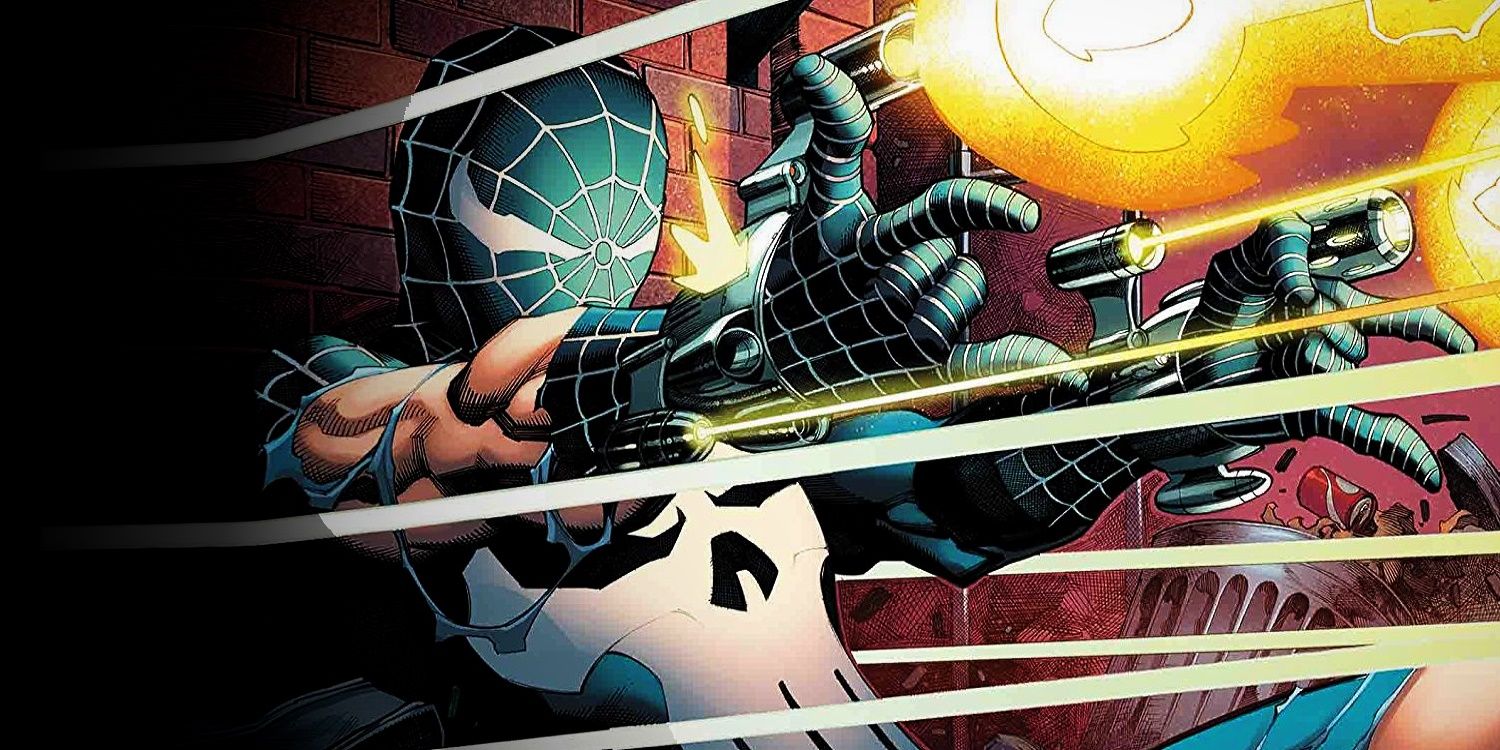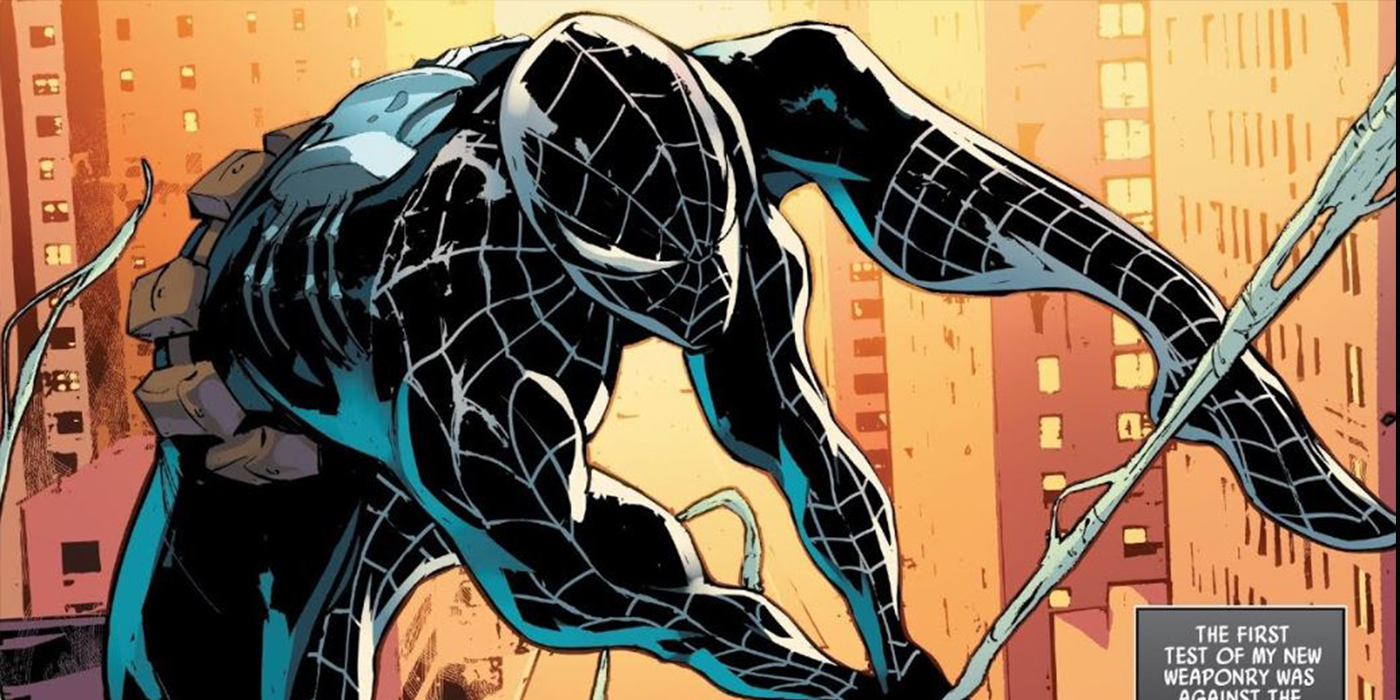Spider-Man is one of the most positive, vibrant, inspirational superheroes in comics, marking him as one of the most popular fictional characters since his introduction in 1963. Selfless and committed to fighting crime, Spider-Man will stop at nothing to save lives...even if those lives are sometimes his own enemies. On the flip side, the Punisher is on a one-man mission to eliminate evildoers in the most ruthless and efficient means possible - and to make that elimination permanent. The two literally could not be any more opposite each other, in fact, Punisher's first appearance saw him fighting everyone's favorite webslinger!
Things could have gone very differently for everyone's Friendly Neighborhood Spider-Man. In 2018's Marvel one-shot What If...Peter Parker Became The Punisher?, we get a different, darker look at Spider-Man, one who isn't afraid to let his ingenuity and scientific know-how lead to lethal confrontations with his enemies. Known almost as much for his sense of humor, here Spider-Man is all business. Gone is his color red-and-blue costume, replaced instead with a black, utilitarian suit adorned with a giant skull.
Beginning with a slight twist to his well-known origin, Peter Parker is bitten by a "false widow," a black spider with a skull-like design on its abdomen. He acquires his well-known spider-like abilities, and his origin plays out as expected: living with his aunt and uncle; his brief wrestling career and media fame; a home robbery turned deadly for his Uncle Ben. Confronting his uncle's killer, though, Spider-Man makes the decision to use his great power not for responsibility, but for vengeance.
His war on the underworld finds Peter utilizing his scientific knowledge to outfit his suit with specialized weapons: an EMP pulse to deal with Electro; a flamethrower to turn Sandman into glass; electric tasers easily take down Kraven, and armor-piercing bullets turn Doctor Octopus's arms into shrapnel. All the while, his career as a photographer for the Daily Bugle fund his endeavors, and the sensationalist headlines by J. Jonah Jameson don't bother him at all: in fact, he embraces Jameson's rantings of Spider-Man's viciousness, figuring villains and mobsters would do well to be afraid.
The only persistent threat remains Green Goblin, whose armor Peter had been unable to penetrate, and whose seemingly-final confrontation leads to Norman Osborn, Green Goblin's alter ego, amnesiac. Thinking his enemy is gone for good, Peter retires his deadly Spider-Punisher persona, and tries to enjoy his life, leaving the remaining mobsters and gangsters to fight among themselves, eventually escalating their deadly turf wars. As the street violence escalates, Green Goblin returns, having regained his memory. Kidnapping Gwen Stacy, Green Goblin confronts Spider-Man one last time, succumbing to his armor-piercing rounds, and leaving Peter vowing to never return to his crime-fighting antics, as it nearly cost Gwen her life.
This decidedly darker take on the Spider-Man mythos shows what happens when a hero, even one as inspirational and optimistic as Spider-Man, gives in to his baser instincts. The last few pages introduce a new origin for Frank Castle's Punisher, subverting the positive message Spider-Man tends to inspire into something much more deadly. The image of a gun-toting Spider-Man wiping out criminals and supervillains alike is a difficult one to shake off and shows why Spider-Man is best throwing around jokes as well as punches. This isn't the craziest take in the What If...? line of comics, but it is one of the more interesting stories.


